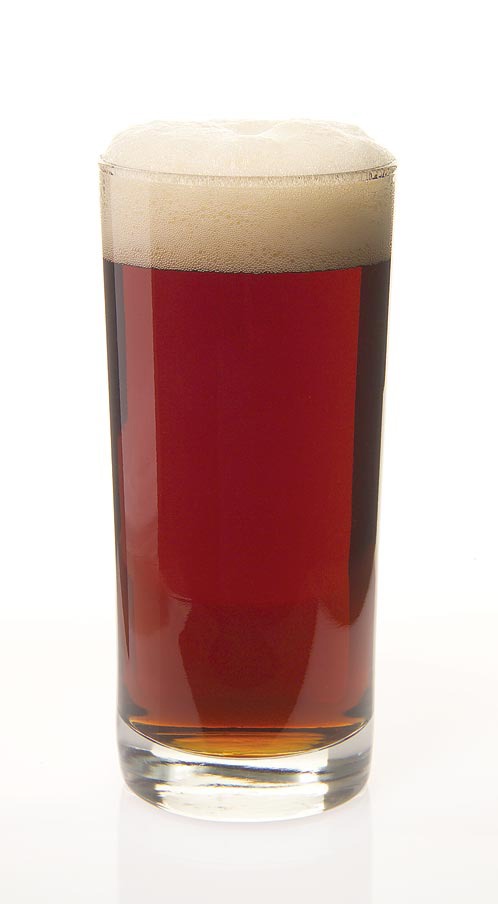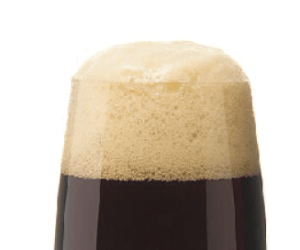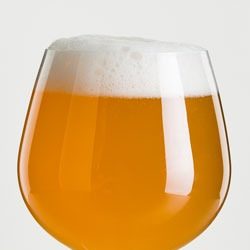New Old Timer’s Bock
Written by Reed Antis

New Old Timer’s Bock
(6 gallon/23 L, partial mash)
OG = 1.060 FG = 1010
IBU = 22 SRM = 13 ABV = 6.4%
This recipe is based on the all-grain recipe by Terry Foster in the October 2019 issue of BYO called Old Timer’s Bock. It shows how I would create a partial mash recipe using malt extract in place of much of the base malt in Terry’s recipe, however keep the use of flaked maize, which Terry’s extract-only option did not do. This should result in a beer closer in flavor to the all-grain version, but allow for a shortened brew day that requires less equipment than all-grain brewing does.
Ingredients
5 lbs. (2.27 kg) pale dried malt extract
1 lb. (454 g) pale ale malt
1.75 lbs. (0.79 kg) crystal malt (60 °L)
3 lbs. (1.36 kg) flaked maize
7.3 AAU Cluster hops (60 min.) (1 oz./28g at 7.3% alpha acids)
1 gram Whirlfloc® (15 min.)
1⁄4 tsp. (7 grams) amylase enzyme
White Labs WLP820 (Oktoberfest/Märzen Lager) or Wyeast 2206 (Bavarian Lager) or SafLager S-23 yeast
2⁄3 cups corn sugar (if priming)
Step by Step
Several days before brew day, either do a 4-L starter, unless using dried yeast, in which case you will want to use two 11.5-gram packages. Using reverse osmosis (RO) water, treat all of your brewing water to a pH of 5.5 using phosphoric or lactic acid. Be prepared to heat two separate pots with 2 gallons (8 L) of water, adding 1⁄4 tsp. of calcium chloride and 1⁄4 tsp. of calcium sulfate (gypsum) to each. In one pot, heat your mash water to 162 °F (72 °C), then add your grain in a bag, stabilize to 150 °F (66 °C), and add 1⁄4 tsp. (7 g) of amylase enzyme to the mash. The amylase enzyme will help in converting the flaked maize within a 45-minute time period.
While your grains are mashing, the other 2 gallons (8 L) of water should be heated to 170 °F (77 °C). This is to help save time while brewing.
Take a small sample of your mash liquid and check for conversion with iodine. Once conversion has been verified, take your bag of grains out and give them a quick soak in your brew kettle to rinse the remaining sugars from the grain. Now gently squeeze your grains to remove the excess liquid. When done with grain rinsing, add the liquid from the mash pot to the brew kettle. Your volume in your brew kettle will be under 4 gallons (15 L). Bring your wort to a boil. Keep the lid mostly on the kettle with a space of an inch or two (3–5 cm) uncovered during the boil. Add the hops and Whirlfloc® as indicated in the ingredients.
At the end of your boil the volume will be closer to 3 gallons (9.5 L). Remove the kettle from heat and add all the malt extract to the wort. Stir until all of the extract is dissolved.
With an immersion chiller or cold water bath method, cool the wort to 80–85 °F (27–29 °C). Now dump the wort into the bottling bucket and add refrigerated RO water to the 6-gallon (23-L) mark to aid in the cooling of the wort. Allow to rest for one hour, with the bottling bucket tilted so that the spigot side of the bucket is slightly elevated so the trub slides to the opposite side of the bucket. After an hour, open spigot of the bottling bucket, capture the first pint of wort before allowing the rest of the wort to flow into your fermenter. Add the yeast when filling the fermenter.
Ferment at 52 °F (11 °C) and do a diacetyl rest for a day or two upon completion. Transfer and lager at 32 °F (0 °C) for three weeks. Keg and force carbonate or prime and bottle condition as usual. I would use fresh yeast if bottling with corn sugar.
Tips for Success:
I have tested my RO water and my tests show it has a pH of 6, so I do not do any adjustments with phosphoric acid to my water. The RO water you use may have a different pH, so it should be checked and brought to 5.5 if it is not already close.


